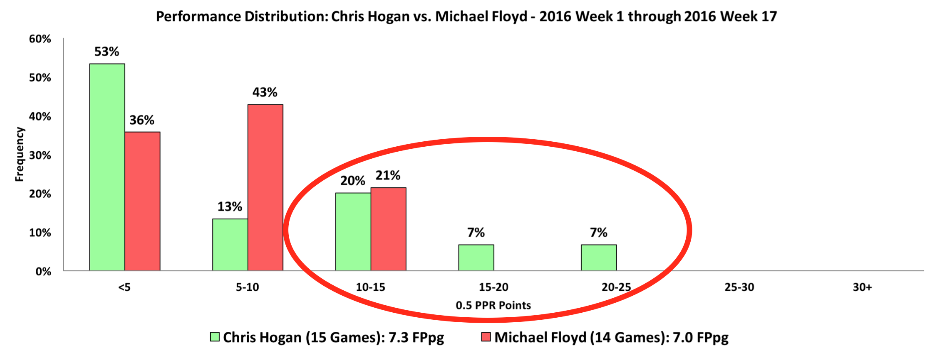NFL Best Ball 101: Getting Started
You may have noticed new contests appearing in the Underdog Fantasy lobby: NFL Best Ball. These contests strip fantasy football down to the most exciting part of everyone’s fantasy season, the draft (official rules here). With DRAFT’s best ball leagues, you leave behind the time commitment (and headaches) associated with waiver claims and weekly sit/start decisions, and just draft, draft again, and then draft some more.
What’s even better than drafting? Drafting and winning. That’s where RotoGrinders and this weekly series come into play.
While best ball is relatively new to the Underdog platform, the game itself has been around for years, and in the dark corners of the internet, a few analysts have studied the game and developed strategies for this fun (and addictive) breed of fantasy sports. I have personally competed in close to 200 best ball leagues, and I have compiled my own database with the rosters and results from over 9,000 public best ball drafts (over two million individual draft picks!). I’ve joined the RotoGrinders team with one goal: to share what I have learned from my own experience, and from that mountain of data, to help you take down as many of these leagues as possible.
That effort starts here, where I highlight a couple of the most important differences between best ball and traditional season-long fantasy sports, and how you can use them to your advantage. Let’s dive into Best Ball 101.
Roster Construction
Your involvement with your best ball team ends in the 18th round, with your final draft pick. You will not choose who to start each week (the system does that for you), and you will not have the ability to add free agents after the draft. That means you will need to accumulate enough depth at each position to cover your players’ expected down weeks (byes) and the unexpected (e.g. injury).
In traditional re-draft leagues, I’d rarely recommend drafting more than one quarterback, because you can always find a bye week fill-in, or an injury replacement on the waiver wire. But, without that option, your best ball team requires more – you will need at least two quarterbacks, ideally with different bye weeks, and you may want to draft as many as three. This need for depth is especially important for a high-risk position like running back, where injury is practically the norm. With that in mind, plan on finishing the majority of your drafts within these ranges:
QB: 2-3
RB: 4-6
WR: 6-9
TE: 2-4
Future articles will look at roster construction in much more depth, and identify the factors that tell us when to target the high or low end of each range.
The Best Ball Effect: Players to Target
The best ball format not only influences the number of players you’ll want to draft at each position, but also changes the value of certain players based on how they score their points. Generally speaking, more volatile “boom/bust” players gain value in best ball relative to traditional leagues. The key to their increased value is the fact that you will not have to guess which weeks to put them into your starting lineup. The effect tends to be most pronounced at the WR and TE positions.
Consider the cases of Chris Hogan and Michael Floyd in 2016. Both players were relatively trendy picks that summer and both players averaged close to seven fantasy points per game (0.5 PPR). Neither player had a particularly good year, but for owners who had to set their starting lineups each week, Hogan in particular was a nightmare. He generated a few usable weeks, but as you can see in the following chart, putting him in your starting lineup was a dangerous gamble – one that rarely paid off.

For best ball teams, however, Hogan proved to be a useful contributor, while Floyd generally was not. The reason was Hogan’s higher ceiling. Hogan had five games of at least ten points, including two over 15, while Floyd broke the ten-point threshold only three times, and maxed out at 12.6 in week 10. Generating those bigger games, albeit infrequently, allowed Hogan to break into best ball teams’ starting lineups multiple times last year, and because his owners had deep rosters, they virtually always had coverage for his all-too-frequent busts.

So how do we use this “best ball effect” to our advantage? While we cannot predict exactly how volatile a player’s weekly performance will be, there are certain types of players whose games lend themselves to the boom/bust profile. Among wide receivers, these include deep ball specialists and players involved in special teams. At tight end, players who gain value in best ball relative to other formats are those who often get discounted because they are labeled “touchdown dependent.”
For more insights, check out NFL best ball rankings from RotoGrinders!